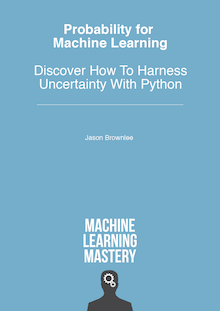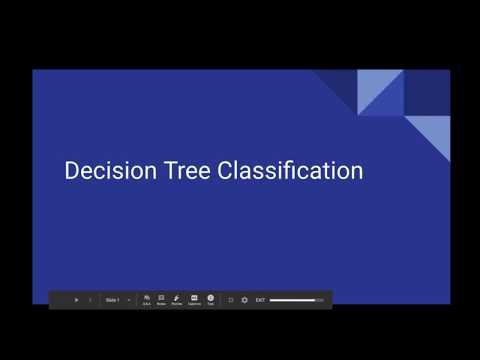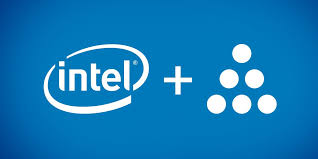Data achieve calculates the discount in entropy or shock from reworking a dataset in a roundabout way.
It’s generally used within the building of determination timber from a coaching dataset, by evaluating the data achieve for every variable, and choosing the variable that maximizes the data achieve, which in flip minimizes the entropy and finest splits the dataset into teams for efficient classification.
Data achieve may also be used for characteristic choice, by evaluating the achieve of every variable within the context of the goal variable. On this barely completely different utilization, the calculation is known as mutual info between the 2 random variables.
On this submit, you’ll uncover info achieve and mutual info in machine studying.
After studying this submit, you’ll know:
- Data achieve is the discount in entropy or shock by reworking a dataset and is commonly utilized in coaching determination timber.
- Data achieve is calculated by evaluating the entropy of the dataset earlier than and after a change.
- Mutual info calculates the statistical dependence between two variables and is the title given to info achieve when utilized to variable choice.
Uncover bayes opimization, naive bayes, most chance, distributions, cross entropy, and far more in my new ebook, with 28 step-by-step tutorials and full Python supply code.
Let’s get began.
What’s Data Achieve and Mutual Data for Machine Studying
Picture by Giuseppe Milo, some rights reserved.
Overview
This tutorial is split into 5 components; they’re:
- What Is Data Achieve?
- Labored Instance of Calculating Data Achieve
- Examples of Data Achieve in Machine Studying
- What Is Mutual Data?
- How Are Data Achieve and Mutual Data Associated?
What Is Data Achieve?
Data Achieve, or IG for brief, measures the discount in entropy or shock by splitting a dataset in accordance with a given worth of a random variable.
A bigger info achieve suggests a decrease entropy group or teams of samples, and therefore much less shock.
Data quantifies how stunning an occasion is from a random variable in bits. Entropy quantifies how a lot info there may be in a random variable, or extra particularly, the likelihood distribution for the occasions of the random variable.
A bigger entropy suggests decrease likelihood occasions or extra shock, whereas a decrease entropy suggests bigger likelihood occasions with much less shock.
We are able to take into consideration the entropy of a dataset by way of the likelihood distribution of observations within the dataset belonging to at least one class or one other, e.g. two lessons within the case of a binary classification dataset.
One interpretation of entropy from info concept is that it specifies the minimal variety of bits of data wanted to encode the classification of an arbitrary member of S (i.e., a member of S drawn at random with uniform likelihood).
— Web page 58, Machine Studying, 1997.
For instance, in a binary classification downside (two lessons), we are able to calculate the entropy of the info pattern as follows:
- Entropy = -(p(zero) * log(P(zero)) + p(1) * log(P(1)))
A dataset with a 50/50 cut up of samples for the 2 lessons would have a most entropy (most shock) of 1 bit, whereas an imbalanced dataset with a cut up of 10/90 would have a smaller entropy as there can be much less shock for a randomly drawn instance from the dataset.
We are able to reveal this with an instance of calculating the entropy for this imbalanced dataset in Python. The whole instance is listed under.
|
|
# calculate the entropy for a dataset from math import log2 # proportion of examples in every class class0 = 10/100 class1 = 90/100 # calculate entropy entropy = -(class0 * log2(class0) + class1 * log2(class1)) # print the outcome print(‘entropy: %.3f bits’ % entropy) |
Working the instance, we are able to see that entropy of the dataset for binary classification is lower than 1 bit. That’s, lower than one bit of data is required to encode the category label for an arbitrary instance from the dataset.
On this means, entropy can be utilized as a calculation of the purity of a dataset, e.g. how balanced the distribution of lessons occurs to be.
An entropy of zero bits signifies a dataset containing one class; an entropy of 1 or extra bits suggests most entropy for a balanced dataset (relying on the variety of lessons), with values in between indicating ranges between these extremes.
Data achieve offers a means to make use of entropy to calculate how a change to the dataset impacts the purity of the dataset, e.g. the distribution of lessons. A smaller entropy suggests extra purity or much less shock.
… info achieve, is solely the anticipated discount in entropy attributable to partitioning the examples in accordance with this attribute.
— Web page 57, Machine Studying, 1997.
For instance, we could want to consider the impression on purity by splitting a dataset S by a random variable with a variety of values.
This may be calculated as follows:
- IG(S, a) = H(S) – H(S | a)
The place IG(S, a) is the data for the dataset S for the variable a for a random variable, H(S) is the entropy for the dataset earlier than any change (described above) and H(S | a) is the conditional entropy for the dataset given the variable a.
This calculation describes the achieve within the dataset S for the variable a. It’s the variety of bits saved when reworking the dataset.
The conditional entropy might be calculated by splitting the dataset into teams for every noticed worth of a and calculating the sum of the ratio of examples in every group out of your complete dataset multiplied by the entropy of every group.
- H(S | a) = sum v in a Sa(v)/S * H(Sa(v))
The place Sa(v)/S is the ratio of the variety of examples within the dataset with variable a has the worth v, and H(Sa(v)) is the entropy of group of samples the place variable a has the worth v.
This may sound a bit of complicated.
We are able to make the calculation of data achieve concrete with a labored instance.
Need to Be taught Chance for Machine Studying
Take my free 7-day electronic mail crash course now (with pattern code).
Click on to sign-up and in addition get a free PDF E-book model of the course.
Obtain Your FREE Mini-Course
Labored Instance of Calculating Data Achieve
On this part, we’ll make the calculation of data achieve concrete with a labored instance.
We are able to outline a operate to calculate the entropy of a bunch of samples primarily based on the ratio of samples that belong to class zero and sophistication 1.
|
|
# calculate the entropy for the cut up within the dataset def entropy(class0, class1): return -(class0 * log2(class0) + class1 * log2(class1)) |
Now, take into account a dataset with 20 examples, 13 for sophistication zero and seven for sophistication 1. We are able to calculate the entropy for this dataset, which may have lower than 1 bit.
|
|
... # cut up of the primary dataset class0 = 13 / 20 class1 = 7 / 20 # calculate entropy earlier than the change s_entropy = entropy(class0, class1) print(‘Dataset Entropy: %.3f bits’ % s_entropy) |
Now take into account that one of many variables within the dataset has two distinctive values, say “value1” and “value2.” We’re involved in calculating the data achieve of this variable.
Let’s assume that if we cut up the dataset by value1, we’ve got a bunch of eight samples, seven for sophistication zero and one for sophistication 1. We are able to then calculate the entropy of this group of samples.
|
|
... # cut up 1 (cut up through value1) s1_class0 = 7 / eight s1_class1 = 1 / eight # calculate the entropy of the primary group s1_entropy = entropy(s1_class0, s1_class1) print(‘Group1 Entropy: %.3f bits’ % s1_entropy) |
Now, let’s assume that we cut up the dataset by value2; we’ve got a bunch of 12 samples with six in every group. We might anticipate this group to have an entropy of 1.
|
|
... # cut up 2 (cut up through value2) s2_class0 = 6 / 12 s2_class1 = 6 / 12 # calculate the entropy of the second group s2_entropy = entropy(s2_class0, s2_class1) print(‘Group2 Entropy: %.3f bits’ % s2_entropy) |
Lastly, we are able to calculate the data achieve for this variable primarily based on the teams created for every worth of the variable and the calculated entropy.
The primary variable resulted in a bunch of eight examples from the dataset, and the second group had the remaining 12 samples within the information set. Due to this fact, we’ve got all the things we have to calculate the data achieve.
On this case, info achieve might be calculated as:
- Entropy(Dataset) – Rely(Group1) / Rely(Dataset) * Entropy(Group1) + Rely(Group2) / Rely(Dataset) * Entropy(Group2)
Or:
- Entropy(13/20, 7/20) – eight/20 * Entropy(7/eight, 1/eight) + 12/20 * Entropy(6/12, 6/12)
Or in code:
|
|
... # calculate the data achieve achieve = s_entropy - (eight/20 * s1_entropy + 12/20 * s2_entropy) print(‘Data Achieve: %.3f bits’ % achieve) |
Tying this all collectively, the whole instance is listed under.
|
1 2 three four 5 6 7 eight 9 10 11 12 13 14 15 16 17 18 19 20 21 22 23 24 25 26 27 28 29 30 31
|
# calculate the data achieve from math import log2
# calculate the entropy for the cut up within the dataset def entropy(class0, class1): return -(class0 * log2(class0) + class1 * log2(class1))
# cut up of the primary dataset class0 = 13 / 20 class1 = 7 / 20 # calculate entropy earlier than the change s_entropy = entropy(class0, class1) print(‘Dataset Entropy: %.3f bits’ % s_entropy)
# cut up 1 (cut up through value1) s1_class0 = 7 / eight s1_class1 = 1 / eight # calculate the entropy of the primary group s1_entropy = entropy(s1_class0, s1_class1) print(‘Group1 Entropy: %.3f bits’ % s1_entropy)
# cut up 2 (cut up through value2) s2_class0 = 6 / 12 s2_class1 = 6 / 12 # calculate the entropy of the second group s2_entropy = entropy(s2_class0, s2_class1) print(‘Group2 Entropy: %.3f bits’ % s2_entropy)
# calculate the data achieve achieve = s_entropy - (eight/20 * s1_entropy + 12/20 * s2_entropy) print(‘Data Achieve: %.3f bits’ % achieve) |
First, the entropy of the dataset is calculated at just below 1 bit. Then the entropy for the primary and second teams are calculated at about zero.5 and 1 bits respectively.
Lastly, the data achieve for the variable is calculated as zero.117 bits. That’s, the achieve to the dataset by splitting it through the chosen variable is zero.117 bits.
|
|
Dataset Entropy: zero.934 bits Group1 Entropy: zero.544 bits Group2 Entropy: 1.000 bits Data Achieve: zero.117 bits |
Examples of Data Achieve in Machine Studying
Maybe the most well-liked use of data achieve in machine studying is in determination timber.
An instance is the Iterative Dichotomiser three algorithm, or ID3 for brief, used to assemble a choice tree.
Data achieve is exactly the measure utilized by ID3 to pick the perfect attribute at every step in rising the tree.
— Web page 58, Machine Studying, 1997.
The knowledge achieve is calculated for every variable within the dataset. The variable that has the most important info achieve is chosen to separate the dataset. Usually, a bigger achieve signifies a smaller entropy or much less shock.
Observe that minimizing the entropy is equal to maximizing the data achieve …
— Web page 547, Machine Studying: A Probabilistic Perspective, 2012.
The method is then repeated on every created group, excluding the variable that was already chosen. This stops as soon as a desired depth to the choice tree is reached or no extra splits are attainable.
The method of choosing a brand new attribute and partitioning the coaching examples is now repeated for every non terminal descendant node, this time utilizing solely the coaching examples related to that node. Attributes which have been included larger within the tree are excluded, in order that any given attribute can seem at most as soon as alongside any path via the tree.
— Web page 60, Machine Studying, 1997.
Data achieve can be utilized as a cut up criterion in most trendy implementations of determination timber, such because the implementation of the Classification and Regression Tree (CART) algorithm within the scikit-learn Python machine studying library within the DecisionTreeClassifier class for classification.
This may be achieved by setting the criterion argument to “entropy” when configuring the mannequin; for instance:
|
|
# instance of a choice tree skilled with info achieve from sklearn.tree import DecisionTreeClassifier mannequin = sklearn.tree.DecisionTreeClassifier(criterion=‘entropy’) ... |
Data achieve may also be used for characteristic choice previous to modeling.
It entails calculating the data achieve between the goal variable and every enter variable within the coaching dataset. The Weka machine studying workbench offers an implementation of data achieve for characteristic choice through the InfoGainAttributeEval class.
On this context of characteristic choice, info achieve could also be known as “mutual info” and calculate the statistical dependence between two variables. An instance of utilizing info achieve (mutual info) for characteristic choice is the mutual_info_classif() scikit-learn operate.
What Is Mutual Data?
Mutual info is calculated between two variables and measures the discount in uncertainty for one variable given a identified worth of the opposite variable.
A amount known as mutual info measures the quantity of data one can get hold of from one random variable given one other.
— Web page 310, Knowledge Mining: Sensible Machine Studying Instruments and Methods, 4th version, 2016.
The mutual info between two random variables X and Y might be said formally as follows:
- I(X ; Y) = H(X) – H(X | Y)
The place I(X ; Y) is the mutual info for X and Y, H(X) is the entropy for X and H(X | Y) is the conditional entropy for X given Y. The outcome has the items of bits.
Mutual info is a measure of dependence or “mutual dependence” between two random variables. As such, the measure is symmetrical, which means that I(X ; Y) = I(Y ; X).
It measures the typical discount in uncertainty about x that outcomes from studying the worth of y; or vice versa, the typical quantity of data that x conveys about y.
— Web page 139, Data Principle, Inference, and Studying Algorithms, 2003.
Kullback-Leibler, or KL, divergence is a measure that calculates the distinction between two likelihood distributions.
The mutual info may also be calculated because the KL divergence between the joint likelihood distribution and the product of the marginal chances for every variable.
If the variables will not be unbiased, we are able to achieve some thought of whether or not they’re ‘shut’ to being unbiased by contemplating the Kullback-Leibler divergence between the joint distribution and the product of the marginals […] which known as the mutual info between the variables
— Web page 57, Sample Recognition and Machine Studying, 2006.
This may be said formally as follows:
- I(X ; Y) = KL(p(X, Y) || p(X) * p(Y))
Mutual info is at all times bigger than or equal to zero, the place the bigger the worth, the better the connection between the 2 variables. If the calculated result’s zero, then the variables are unbiased.
Mutual info is commonly used as a basic type of a correlation coefficient, e.g. a measure of the dependence between random variables.
Additionally it is used as a facet in some machine studying algorithms. A typical instance is the Impartial Element Evaluation, or ICA for brief, that gives a projection of statistically unbiased elements of a dataset.
How Are Data Achieve and Mutual Data Associated?
Mutual Data and Data Achieve are the identical factor, though the context or utilization of the measure usually provides rise to the completely different names.
For instance:
- Impact of Transforms to a Dataset (determination timber): Data Achieve.
- Dependence Between Variables (characteristic choice): Mutual Data.
Discover the similarity in the way in which that the mutual info is calculated and the way in which that info achieve is calculated; they’re equal:
- I(X ; Y) = H(X) – H(X | Y)
and
- IG(S, a) = H(S) – H(S | a)
As such, mutual info is usually used as a synonym for info achieve. Technically, they calculate an identical quantity if utilized to the identical information.
We are able to perceive the connection between the 2 because the extra the distinction within the joint and marginal likelihood distributions (mutual info), the bigger the achieve in info (info achieve).
Additional Studying
This part offers extra assets on the subject if you’re trying to go deeper.
Books
API
Articles
Abstract
On this submit, you found info achieve and mutual info in machine studying.
Particularly, you discovered:
- Data achieve is the discount in entropy or shock by reworking a dataset and is commonly utilized in coaching determination timber.
- Data achieve is calculated by evaluating the entropy of the dataset earlier than and after a change.
- Mutual info calculates the statistical dependence between two variables and is the title given to info achieve when utilized to variable choice.
Do you could have any questions?
Ask your questions within the feedback under and I’ll do my finest to reply.













